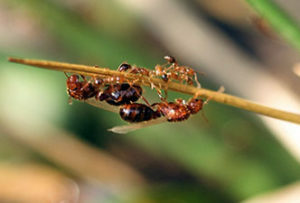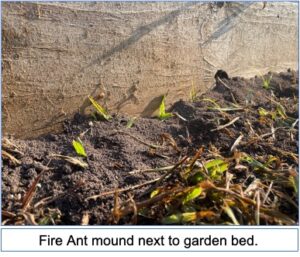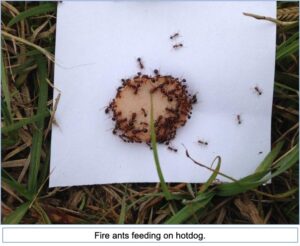Fire Ant Control in Gardens & Landscapes
go.ncsu.edu/readext?938781
en Español / em Português
El inglés es el idioma de control de esta página. En la medida en que haya algún conflicto entre la traducción al inglés y la traducción, el inglés prevalece.
Al hacer clic en el enlace de traducción se activa un servicio de traducción gratuito para convertir la página al español. Al igual que con cualquier traducción por Internet, la conversión no es sensible al contexto y puede que no traduzca el texto en su significado original. NC State Extension no garantiza la exactitud del texto traducido. Por favor, tenga en cuenta que algunas aplicaciones y/o servicios pueden no funcionar como se espera cuando se traducen.
Português
Inglês é o idioma de controle desta página. Na medida que haja algum conflito entre o texto original em Inglês e a tradução, o Inglês prevalece.
Ao clicar no link de tradução, um serviço gratuito de tradução será ativado para converter a página para o Português. Como em qualquer tradução pela internet, a conversão não é sensivel ao contexto e pode não ocorrer a tradução para o significado orginal. O serviço de Extensão da Carolina do Norte (NC State Extension) não garante a exatidão do texto traduzido. Por favor, observe que algumas funções ou serviços podem não funcionar como esperado após a tradução.
English
English is the controlling language of this page. To the extent there is any conflict between the English text and the translation, English controls.
Clicking on the translation link activates a free translation service to convert the page to Spanish. As with any Internet translation, the conversion is not context-sensitive and may not translate the text to its original meaning. NC State Extension does not guarantee the accuracy of the translated text. Please note that some applications and/or services may not function as expected when translated.
Collapse ▲Recent warm and wet conditions have made fire ant mounds very noticeable across Pamlico County. While no single control measure will ever eradicate fire ants from our landscape, we can manage them and reduce the chances of unwanted interactions.
Fire ants are known for building large colonies underground, with portions of the colony above ground in smaller visible mounds. However, some smaller colonies may go undetected in the landscape until heavy rainfall occurs, which force ants closer to the surface resulting in more visible mounds. Frequent mowing or harassment of these mounds may discourage some fire ants from remaining in a location, but will not reduce populations.
A common approach to fire ant control involves applying insecticides to yards and mounds. These products can be broken down into two categories, baits and contact insecticides. Baits are effective tools for reducing fire ants in the landscape, especially when there are a large number of mounds in the yard. However, these products work by attracting fire ants to feed on the insecticide containing bait, which requires actively foraging ants and generally dry conditions. It is best to check that fire ants are actively feeding before broadcasting a bait by placing a potato chip or slice of hotdog near a mound. If, after 5-10 minutes, ants are found feeding on the potato chip or hotdog slice, you know there is a good chance the ants will feed on your bait. If little to no activity is found after 30-minutes, then it is probably best to wait until the ants are more active.
There are numerous contact insecticides available for fire ant control and many can be used in multiple locations (yards, vegetable gardens, ornamental shrubs and flowers). However, to be most effective against fire ants, most require water to be added to move the insecticide into the soil where the majority of ants can be found. Each insecticide label is different, so read and follow the label directions carefully.
While alternative methods like steam, hot water, and other biological control options have been utilized, they are often more labor intensive and provide no better control than approved insecticides. In regards to methods used, it is important to remember that fire ants cannot be eliminated from the landscape. Given enough time they will find their way onto your property.
Fire ants are most active during spring and fall and move deeper underground with conditions become too hot or cold. Heavy rains will often encourage mound building, which provides an opportunity for you to evaluate the location and potential population levels on your property. No single control option exists to eliminate fire ants, so practice patience and take action now. Only through repeated applications of insecticides or alternative control options will you reduce the fire ant population on your property. For more information on fire ants and recommended products for their control review our NC State Extension fire ant factsheet. You can also contact Daniel Simpson at 252-745-4121 or daniel_simpson@ncsu.edu.






